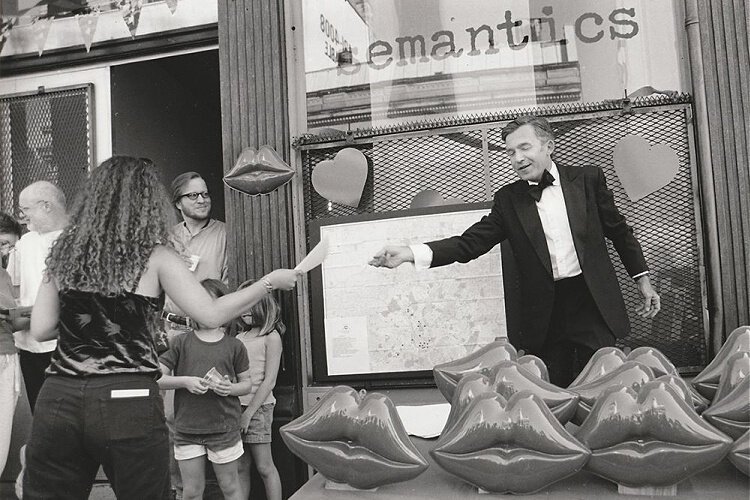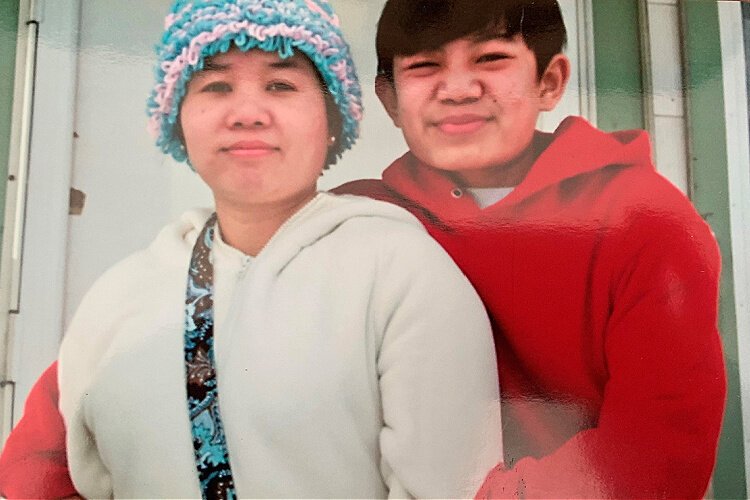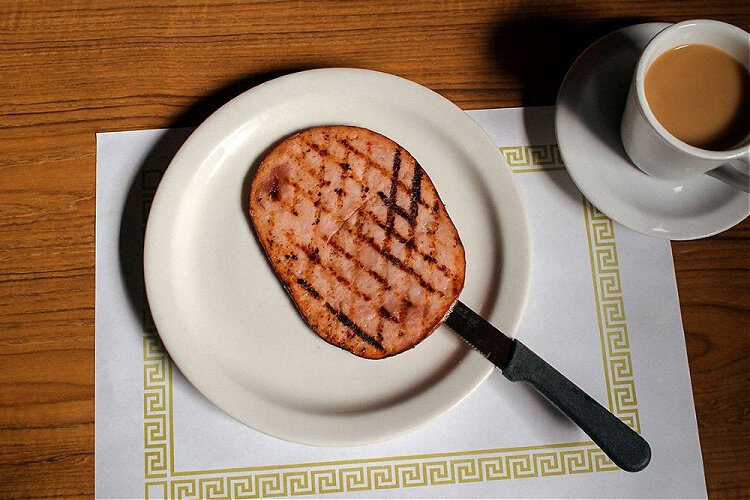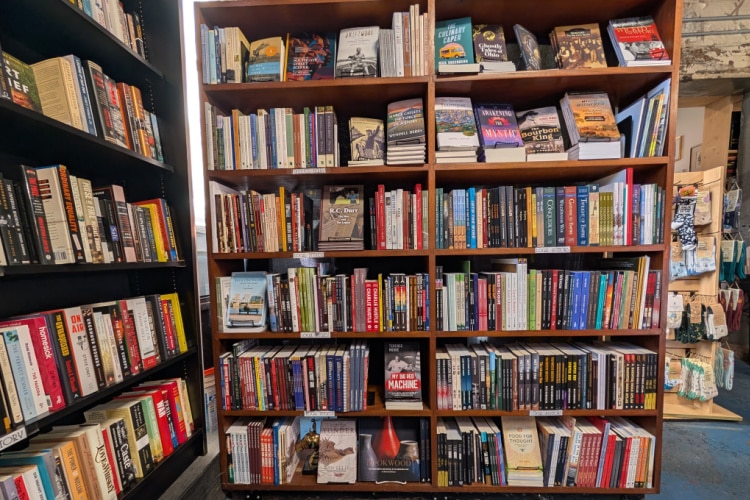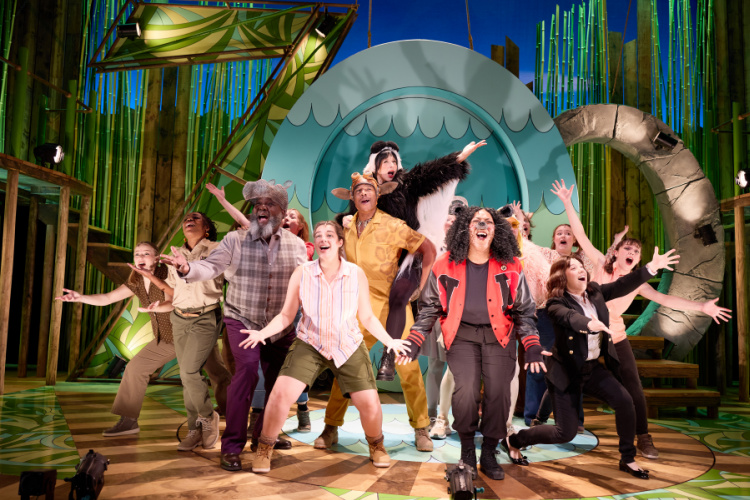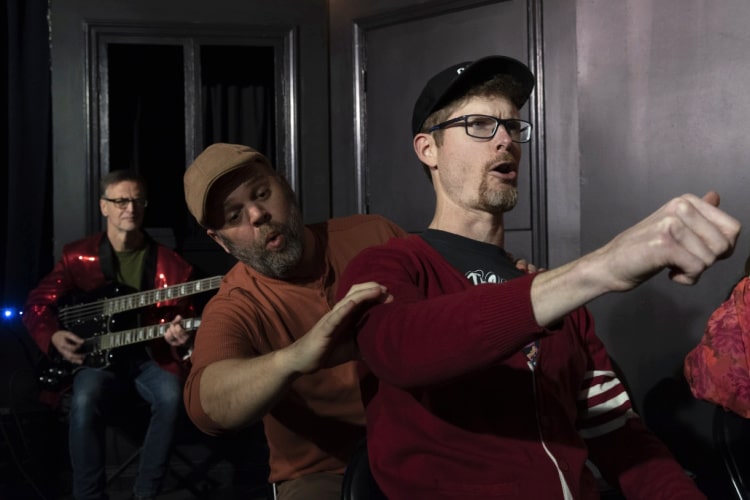Silent stories speaking plainly
A second look at the FotoFocus Biennial 2024
Last month, Soapbox previewed the Opening Weekend of the FotoFocus Biennial, the nonprofit’s every-other-year celebration of photography’s storytelling power. The Opening Weekend provided a tantalizing appetizer of events to whet the Queen City’s appetite for compelling snapshot vignettes.
To attend, click the Passport page on the FotoFocus website.
FotoFocus Executive Director Katie Siegwarth said that despite inclement weather, she said the weekend provided spirited energy and discussions, highlighted by a keynote address by New York Times photography editor Kathy Ryan: “[Ryan] claims to not be a public speaker, but she was very open and engaging about the process of curating published imagery, and the timely and compelling photos that convey the trauma of global conflict and the pandemic.”
She said the exhibits created to reflect the Biennial’s theme, backstories, reinforce the importance of staying curious and taking sufficient time to review what’s seen and find a deeper meaning than what first impressions often provide.
“With everything we can access at our fingertips, we consume information differently than previous generations.” she said. “Absorbing a story through Instagram slides rather than a full article, and with so much AI-generated and deepfake content, it’s important to ask questions to create a deeper understanding. We all have the capacity to ask questions, but sometimes have to be reminded to do so.”
Here’s a look at several ongoing exhibits featured in the Biennial:
More than Meets the Eye: An Immersive Display of Narrative Power through Photos
This exhibit was installed on the Purple People Bridge; it opened on September 13 and will continue through November 3. Elissa Yancey, executive and creative director of A Picture’s Worth, a nonprofit that collaborates with business, organizations, and educators to “bridge narrative divides created by traditional media models,” curated the exhibit.
More than Meets the Eye visually documents the experiences of immigrants who live in our region, and exhibit pieces will contain QR codes that allow the viewer to hear audio clips of the individuals depicted in the photos. The Greater Cincinnati visit last September of Little Amal, a 12-ft.-tall puppet that offers a larger-than-life likeness of a 10-year-old Syrian girl and walked across the Roebling Bridge, provided the exhibit’s inspiration.
On October 10 at 6 p.m. at the Sawyer Point Building, the Summermusik String Quartet will perform music written by immigrants and refugees, and attendees will walk from Sawyer Point to the bridge to view the exhibit. A complementary exhibit, More than Meets the Eye: Multimedia Narratives that Connect Generations and Cultures, will be displayed at the Cincinnati Public Library’s Walnut Hills branch, with an opening reception October 14 at 6:30 p.m. at that library.
Artist Run: The Continuing Legacy of Cincinnati’s Artist-Run Spaces
Cincinnati’s longstanding museums are venerated, but, for innumerable reasons, not every talented artist saw their work immortalized on museum walls. As such, galleries and exhibit spaces operated by local artists provided democratic, inclusive opportunities for themselves and their colleagues to showcase their work. Free of the conventions of constraints of established institutions, artist-led galleries created their own narratives and framework to creatively celebrate and communicate their work to the public.
Developed by Britni Bicknaver and Calcagno Cullen, Artist Run developed a multimedia archive of Cincinnati’s historic artist-run spaces that culminates in performative bus tours that commence at Wave Pool at 2940 Colerain Ave. in Camp Washington on October 11 and 12 at 7 and 9 p.m. In between the tours, a reception will begin at 8 p.m. at Wave Pool to discuss the project and connect the artist-run community.
The tours will visit 10 sites of erstwhile artist-run spaces, and, during the tours, curator and philosopher Sue Spaid will, according to Cullen, “take riders on an educational and entertaining journey with game show-like flair, with quiz questions and prizes will be riddled throughout the tour.”
The bus will be equipped with a projector and sound system, which will highlight photos and audio clips from events and organizers connected to each space.
In describing the significance of artist-run spaces, Cullen said, “These [spaces], typically short-lived and grassroots, are often forgotten as soon as they end. Yet, their importance is unparalleled. They offer … cutting-edge installations and events foundational to careers, lives, and the arts community. The barriers to participation are lower than more established institutions, and most artist-run spaces have some chance, serendipity, and playfulness that invites people into the art world in fun and provocative ways.”
In curating the exhibit, Cullen said, “it was incredibly interesting to see the throughlines, both the commonalities that spurred them into being and the features that led to their eventual decline. The youth and energy, lack of steady and demanding employment, availability of space, and desire to create an active arts community remained constant with their beginnings, and increased rent/eviction from space, aging/parenthood/more demanding jobs, and general fatigue became common themes in their downfalls.”
Southern Democratic
Curated by Phillip March Jones, founder of Lexington’s Institute 193, Southern Democratic cultivates visual vignettes that conveys the energy and diversity of the ever-changing population of the Deep South. The display juxtaposes Election Eve, a photo gallery compiled by William Eggleston during a visit to Plains, Georgia, President Jimmy Carter’s hometown, shortly before the 1976 election.
A consortium of 15 artists encapsulates different facets of Southern topography, life, and culture, with an eye toward celebrating the changing complexion of the region’s inhabitants. FotoFocus’s website offers the following description: “It is the artists whose, often quiet, observations articulated through the lens of words, photographs, films, paintings, and sculpture succeed in truly seeing change––for better or for worse––as it is lived.”
The exhibit will be displayed at The Carnegie Center in Covington from noon to 5 p.m. on Thursdays, Fridays, and Saturdays until February 15, 2025.
Rachael Banks: The Trail of the Dead
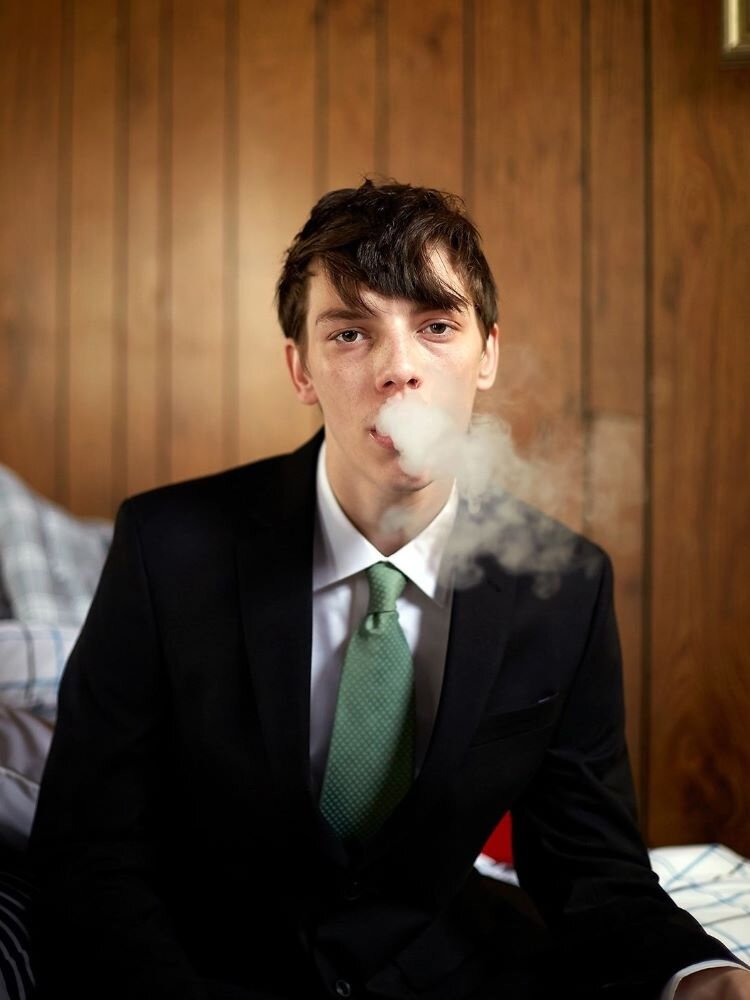
Installed at the Alice F. and Harry K. Weston Art Gallery through November 3, Rachael Banks’ Trail of the Dead exhibit addresses Central Kentucky’s ongoing challenges with drug use, alcoholism, and suicide.
On display through November 3 at the Alice F. and Harris K. Weston Gallery at 650 Walnut St., Banks’ work was spurred by the 1999 death of her second cousin in an auto accident, with the ensuing events influencing her perception of family trauma and references her experience with Central Kentucky’s high rate of alcoholism, drug use, and suicide.
“Trail of the Dead is a powerful installation that creates a compelling visual tableau,” Siegwarth said. “It creates a narrative that starts in a somber place, looking at familial trauma. Some the images are very defiant, almost aggressive, but there are elements that are very hopeful. They speak to the family’s resilience. I think people will leave feeling impacted in a positive way.”

